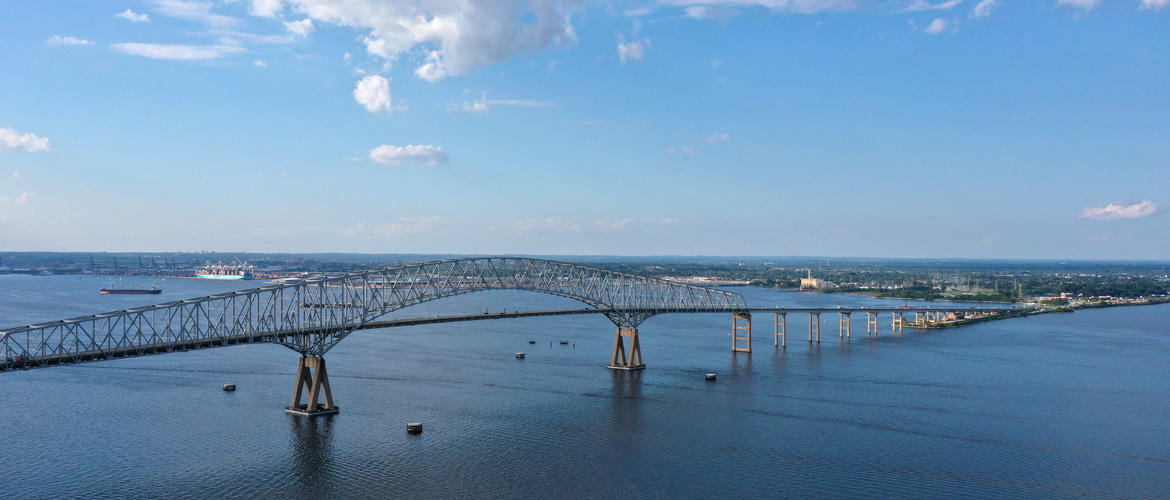At 05:30 GMT yesterday the 26th March 2024, the 9,662 TEU vessel “Dali” leased by Maersk collided with the Francis Scott Key Bridge in Baltimore, sending at least 20 people and a significant section of the bridge into the Patapsco River, with six people tragically presumed dead.
Early press reports which suggested that the vessel, that had two pilots aboard, may have lost power, have been confirmed. Loss of power to the ship’s propellors would very quickly have led to the loss of steerage that resulted in the collision.
President Biden told reporters that the US government would “move heaven and earth to reopen the port and rebuild the bridge as soon as humanly possible,” but added that the process was going to “take some time.”
Officials have said that maritime traffic through the port, which handled 1.1 million TEUs last year, will be suspended “until further notice.”
With the Port of Baltimore closed, both inbound and outbound shipments are facing significant disruptions. For export cargo from Baltimore, containers at the terminal will remain stationary until the port reopens, unless otherwise instructed by the shipper.
Costs associated with rerouting cargo to alternate load ports will be borne by the shipper.
No new export/import bookings will be accepted for Baltimore until further notice and shippers are advised to explore alternative load port options.
Inbound vessels will need to re-route, with East Coast ports including New York, New Jersey and Virginia positioned to handle additional ships, which will potentially ease the impact on trade flows.
Moving Baltimore’s container traffic to Norfolk and NY/NJ would mean an increase of around 10% in volume handling in those two ports, both of which saw a drop in volumes in 2023, that could mean they have sufficient capacity to take the spill-over from Baltimore.
This, of course, does not mean there will not be some disruptive effects, as none of this is pre-planned and some bottlenecks and delays should be anticipated in the short term.
The question is how quickly the container shipping lines can put diversions in place, particularly for vessels already en-route to Baltimore, or containers at the port waiting to be exported. These diversions could increase additional costs to importers whose freight will be diverted.
Our thoughts are with everyone affected by this dreadful accident particularly those with missing loved ones.
If you have any questions or concerns about how your supply chain might be affected by the accident, please contact your Noatum Logistics local representative or write to info@noatumlogistics.com
We will be updating this article with new information regularly in case the situation develops.
